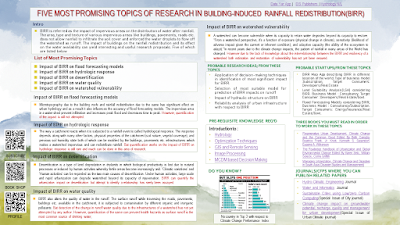BIRR is referred as the impact of impervious areas on the distribution of water after rainfall. The area, type, and texture of various impervious areas like buildings, pavements, roads, etc. do not allow rainfall to infiltrate the soil cover and enforced the water droplets to flow off the watershed as runoff. The impact of buildings on rainfall redistribution and its effect on water availability can yield interesting and useful research proposals. Five of which are listed below:
Impact of BIRR on flood forecasting modelsImpact of BIRR on hydrologic responseImpact of BIRR on desertificationImpact of BIRR on water qualityImpact of BIRR on watershed vulnerability
Click here to download the entire report or view the video below :
Available in Slide share mode also.
@Merchandiseor @Shop
Add to Listy
